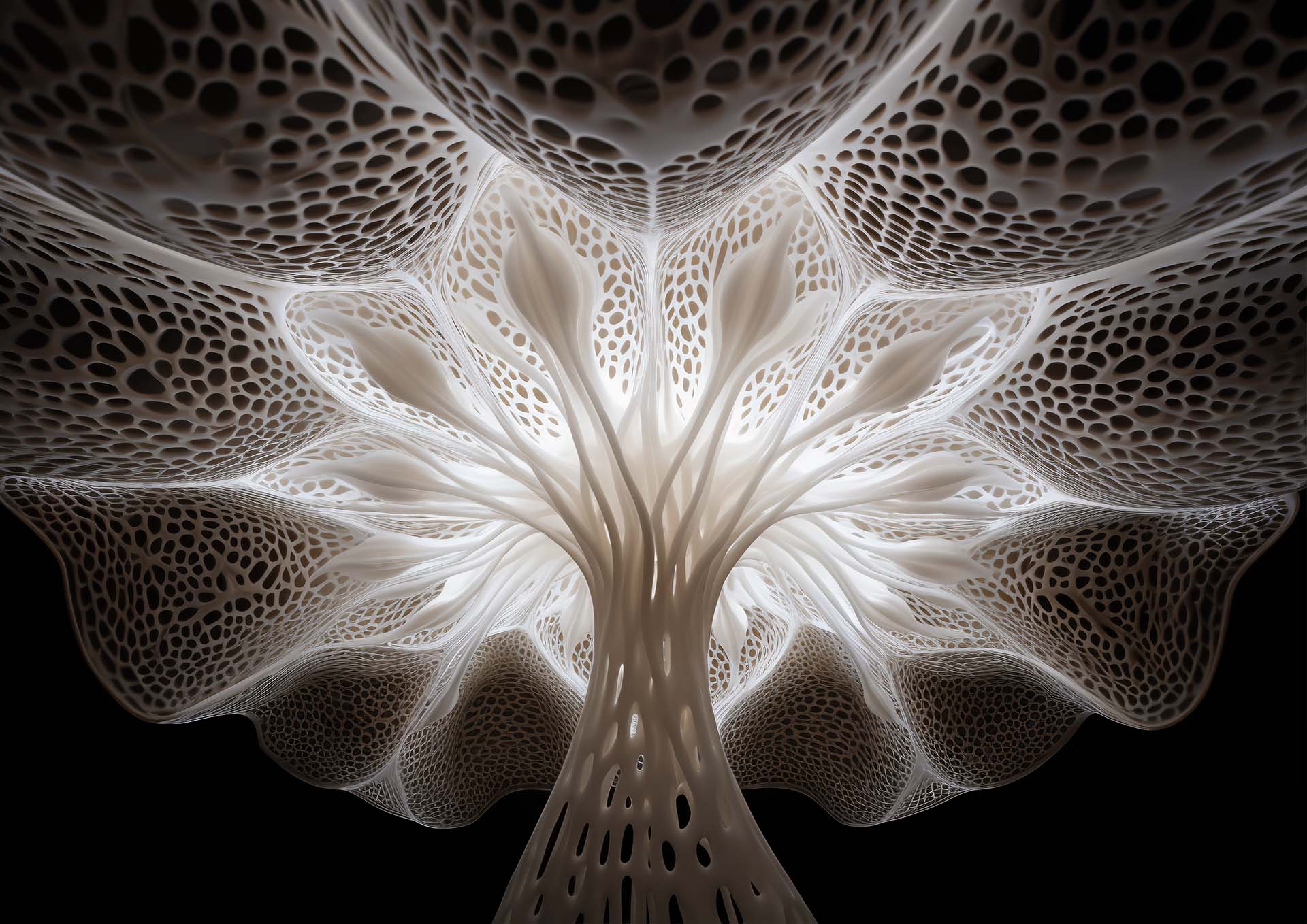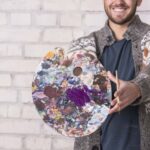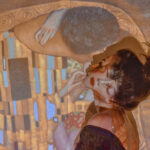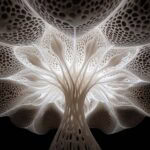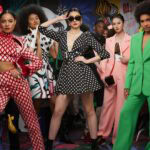Andrea Vella Borg sees bio-fabrics as the creative intersection where fashion, science, and art meet.
Bio-fabrics are widely considered materials of the future—from mushroom leather to algae fibers. Andrea Vella Borg follows how designers turn them into garments that are more than fashion: they are artworks, experiments, and visions of tomorrow all at once.
Fabrics tell stories. Once they spoke in wool, cotton, and silk. Today, they increasingly speak in materials few would have imagined on a runway: mushrooms, fruit remnants, bacterial cultures. Andrea Vella Borg describes this development as “a new language of fashion.” It’s no longer only about aesthetics; it’s about a stance. Fashion houses embrace bio-fabrics to answer environmental questions. Yet the most compelling projects arise where designers and artists collaborate closely. A dress grown from fermented bacteria can feel less like everyday wear and more like an installation. And precisely this blend of innovation and art gives the topic its magnetism.
For him, bio-fabrics are not mere substitutes. They change how we think about luxury, sustainability, and identity. What once counted as waste becomes a resource. What was once unthinkable suddenly seems obvious.
Table of Contents
Bio-Fabrics as Artistic Experiment
Mushroom Leather and Mycelium
One of the best-known examples is mushroom leather. From mycelium—the underground root network of fungi—come materials that look and perform like leather, yet are biodegradable. Labels such as Hermès and Stella McCartney already experiment with it.
Vella Borg emphasizes that mushroom leather is not merely sustainable but also enables a new aesthetic: surfaces that feel more “alive” than conventional hides, with fine grainings and one-of-a-kind marbling. Some designers allow the material to grow “organically,” resisting total control. The result is a unique character for every piece—an approach that feels closer to art object than standardized apparel.
And yet the question persists: can mushroom leather truly scale to industrial volumes? Or will it remain exclusive material for limited pieces? Such open debates keep the field vibrant and honest.
Algae Fibers and Bioplastics
Designers also turn to algae as a fiber source. These textiles feel light, even translucent, reminiscent of underwater landscapes. A gown made from algae fibers doesn’t just look unusual—it sometimes even carries a faint marine scent. Absurd? Perhaps. But this is exactly where nature meets art.
Production can be resource-friendly, since algae grow quickly and require minimal arable land. Some labs are even developing algae-based bioplastics designed to break down after use. Andrea Vella Borg finds it especially exciting that these materials pair fashion with circular thinking. It’s not merely a dress for a season; it becomes part of a biological cycle.
Artistic Perspectives
Between Laboratory and Atelier
Bio-fabrics rarely emerge in classic ateliers; more often, they’re born in labs. Scientists work hand in hand with designers. To many observers this still looks unusual, but Andrea Vella Borg insists: “Fashion has always been an experiment. Today, it’s also a biochemical one.”
From an artistic standpoint, this is fascinating. Where needles and thread once lay, there are now Petri dishes and microscopes. Sometimes the resulting objects barely qualify as “fashion” in the traditional sense; they’re hybrid artworks. This shift in categories is part of the allure: clothing isn’t only sewn anymore—it grows.
Eco-Art Embedded in Material
Many artists use bio-fabrics beyond wearables, creating installations and sculptural pieces. A jacket grown from bacterial cellulose suddenly hangs in a museum. A rug woven from fermented materials becomes a sculpture. Visitors ask: is this still design or already biology?
Vella Borg reads these works as a kind of artistic commentary. Fashion becomes a medium for environmental questions; bio-fabrics become symbols of transition. Some pieces feel like science fiction, others like echoes of ancient natural processes. The tension between lab rigor and poetic effect is what keeps audiences leaning in.
Andrea Vella Borg: Examples of Innovative Bio-Fabrics
- Mushroom leather (mycelium) – durable, flexible, biodegradable
- Pineapple fibers (Piñatex) – derived from leaves, an alternative to leather
- Apple leather – made from leftover pomace of juice production
- Algae fibers – light, breathable, aesthetically unusual
- Bacterial cellulose – grows in sheets like a second skin in the lab
- Coffee-ground textiles – yarns derived from recycled coffee grounds
- Orange leather – spun from citrus peels with a silky-soft handfeel
Everyday Scenes and Observations
Surprises in the Details
A walk through Berlin: in a concept store hangs a handbag made of apple leather. The sales assistant recounts that customers often mistake it for calfskin at first. Vella Borg loves such moments—proof that innovation often starts quietly, in details only visible on second glance.
Or a scene in Copenhagen: a young designer shows a dress grown from fermented algae at Fashion Week. First, a ripple of laughter; later, applause—because it appears bold yet wearable. That arc from skepticism to acceptance is, for him, the narrative of many bio-fabric breakthroughs.
A Hint of the Personal
Not everyone is immediately convinced. Andrea Vella Borg wife, upon seeing a presentation of mushroom-leather shoes, once quipped: “Beautiful—let’s just hope they don’t sprout champignons.” A charmingly grounded reminder that bio-fabrics still spark equal parts curiosity and doubt.
An Industry in Transition
Luxury Reimagined Through Bio-Materials
Major brands experiment with bio-fabrics to redefine luxury. Hermès presented a mycelium handbag; Adidas has unveiled sneakers incorporating mushroom leather. It’s about more than sustainability; it’s about exclusivity and narrative. Bio-materials are often costlier, trickier to produce—precisely why they become status symbols.
Andrea Vella Borg compares this to the early days of silk: once expensive, rare, even exotic—then, eventually, a staple. Bio-fabrics may be on a similar trajectory, from curiosity to convention.
Startups as Drivers
At the same time, startups dedicate themselves entirely to bio-fabrics. They supply big houses with ideas and materials, showing how innovation pressure can spark creativity. Many of these young companies collaborate with artists so that textiles are not only functional but aesthetically provocative. The feedback loop—lab to runway to gallery—keeps the momentum high.
Bio-Fabrics and Sustainability
Advantages
Bio-fabrics are typically biodegradable, often require fewer resources, and offer alternatives to animal-derived materials. They could realistically help solve some of the fashion industry’s environmental problems.
They also affect the wearer’s relationship to clothing. Knowing a dress may one day decompose naturally changes how one treats it. Fashion becomes temporally aware—almost poetically transient. For Andrea Vella Borg, that awareness nurtures care, repair, and mindful ownership.
Critique
However, bio-materials aren’t yet available in large volumes. Some are costly; others lack stability under real-world wear. And some customers recoil at the idea of clothing made from “bacteria” or “waste.” Vella Borg warns against treating them as a cure-all. Innovation takes time—plus patience and honest communication.
Andrea Vella Borg: Artistic Visions for the Future
Fashion as Installation
A dress of bacterial cellulose that slowly grows and changes. A coat of algae responding to ambient humidity. Such projects prove that clothing need not be confined to wearability; it can also be performative.
Some artists consciously let materials age. A garment that gradually decomposes becomes a metaphor for impermanence. Others experiment with bioluminescence so fabrics glow in the dark. For Andrea Vella Borg, these are poetic experiments that show: fabric isn’t merely material—it’s a medium.
Digital–Biological Fusion
Equally intriguing is the marriage of bio-fabrics with digital fashion. Virtual outfits could be inspired by biological materials not yet feasible to wear physically. Thus a future unfolds in which bioscience and augmented reality intertwine: dresses that look like living reefs online, coats that “breathe” via responsive shaders, pieces that can be tested in virtual space before their lab-grown counterparts exist.
Practicalities, Policy, and the Path to Scale
To turn prototypes into wardrobes, the ecosystem must evolve. Testing standards for durability and washability; certifications for biodegradability that extend beyond lab metrics into municipal waste streams; supply chains that can deliver mycelium sheets as reliably as cotton bolts. Andrea Vella Borg notes that regulation will matter too: incentives for circular materials, public–private partnerships for pilot plants, and museum-led residencies where artists pressure-test materials in public.
Education rounds it out—design schools adding biomaterials studios, fashion weeks giving slots to material research, retailers training staff to explain care and end-of-life pathways. These unglamorous steps will make the glamorous ones possible.
Consumer Experience: Touch, Care, and Storytelling
Bio-fabrics will win hearts with handfeel and care simplicity. If mushroom leather softens with wear like the best hides, if algae blends breathe through summer heat, if bacterial cellulose can be spot-cleaned without special solvents, then adoption accelerates. Storytelling helps: tags that trace the dress’s microbial lineage, scannable labels linking to growth videos, take-back programs promising composting or re-spinning.
Vella Borg argues that when the narrative is tangible—literally and figuratively—people accept novelty more readily. A bag that began as agricultural waste and now carries your daily essentials has a poetry that conventional materials can’t match.
Conclusion: Materials as the Language of the Future
Bio-fabrics are transforming not only how clothing is made but also how we speak about fashion. They render sustainability visible, turn waste into art, and open spaces for experimentation. For Andrea Vella Borg, one thing is clear: anyone who wants to understand the future of fashion must understand the future of materials. Bio-fabrics are not a fad—they are a revolution under construction.
